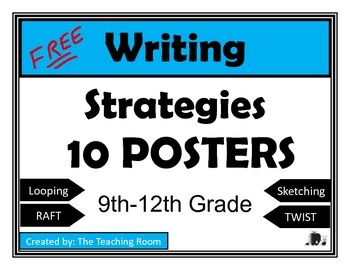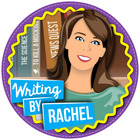 A freebie from Julie Faulkner Grades 6-12
A freebie from Julie Faulkner Grades 6-12
RACE
takes a writer from the beginning of a paragraph to the end. Therefore,
it can be expanded to an entire essay. Using a brain-based strategy
such as this one frequently will produce so much growth and improvement
in writing fluency.A freebie from Doc Running Grades 6-12
Newspaper projects can be a valuable way for students to learn about a subject or assess what they know, but they can be tough. These graphic organizers will help students visually gather their information and write their articles.A freebie from Michele Luck Grades 5-12
Allow your students to practice their longitude and latitude skills while having fun with this Super Bowl Scavenger Hunt Handout. Students can work individually or in small teams to trace the coordinates, locate the teams, and identify the NFL stadiums.
A freebie from History Gal Grades 6-12
See how much your students know about the Pilgrims and the origination of Thanksgiving with this free bingo game!
A freebie from AlwaysLearning Grades 4-7
Understanding mood and tone is integral to gaining deeper meaning from text. The CCSS requires a realignment of a reading program as well as additional skills and strategies to better comprehend text. Understanding text at a deeper level requires readers to comprehend the connotation of words that an author uses to create mood and tone. This mini-lesson and activity defines the two and provides a large group of words for small groups or partners to sort into Neutral, Positive, or Negative groups. This activity can be done on chart paper or easily adapted to Interwrite boards.
A freebie from 2 Peas and a Dog Grades 5-9
This product is a collection of 6 graphic organizers to help student engage, connect and think about their reading. Students are given lots of room to write their thoughts as they read their novels. Boxes are big enough for students to record their thinking on sticky notes and then collect them on the graphic organizer of their choice.The organizer has six different reading strategies graphic organizers: plot, characters, connections, questions, predictions and a combination organizer for students to fill in before, during and after reading.

A freebie from Leah Cleary Grades 6-12
This is the 4th complete vocabulary unit in my world history series. It serves as an organization tool and framework for a unit on the European Middle Ages. This method provides students with the consistency they need to reinforce vital content vocabulary concepts in an entertaining manner.
A freebie from Bridget Riggs Grades 10-12
A breakdown of ACT Test Strategies, Question Types, & Section TimingThe ACT test is quickly becoming the most popular test taken for college entrance. Help your students know what to expect and how to study for the ELA section of the ACT.
This 29 page PDF file is a collection of information about the English section of the ACT test for students.

A freebie from Writing by Rachel Grades 6-12
Refresh your writing prompts with this freebie! creARTive writing is a unique way to integrate art and to inspire creative writing. Students will create an original writing using Henri de Toulouse Lautrec's painting Quadrille at the Moulin Rouge.
A freebie from The Teaching Room Grades 9-12
10 Writing Strategies Posters (8.5 x 11 in).Black and white, plain and practical.
Includes teacher notes with a purpose for each strategy.















